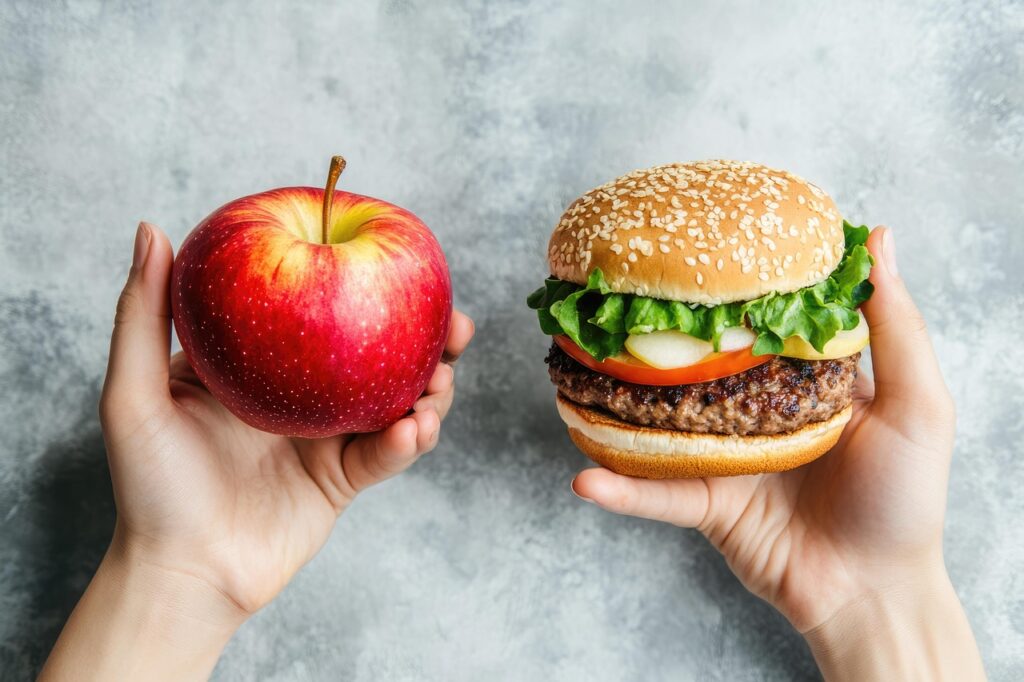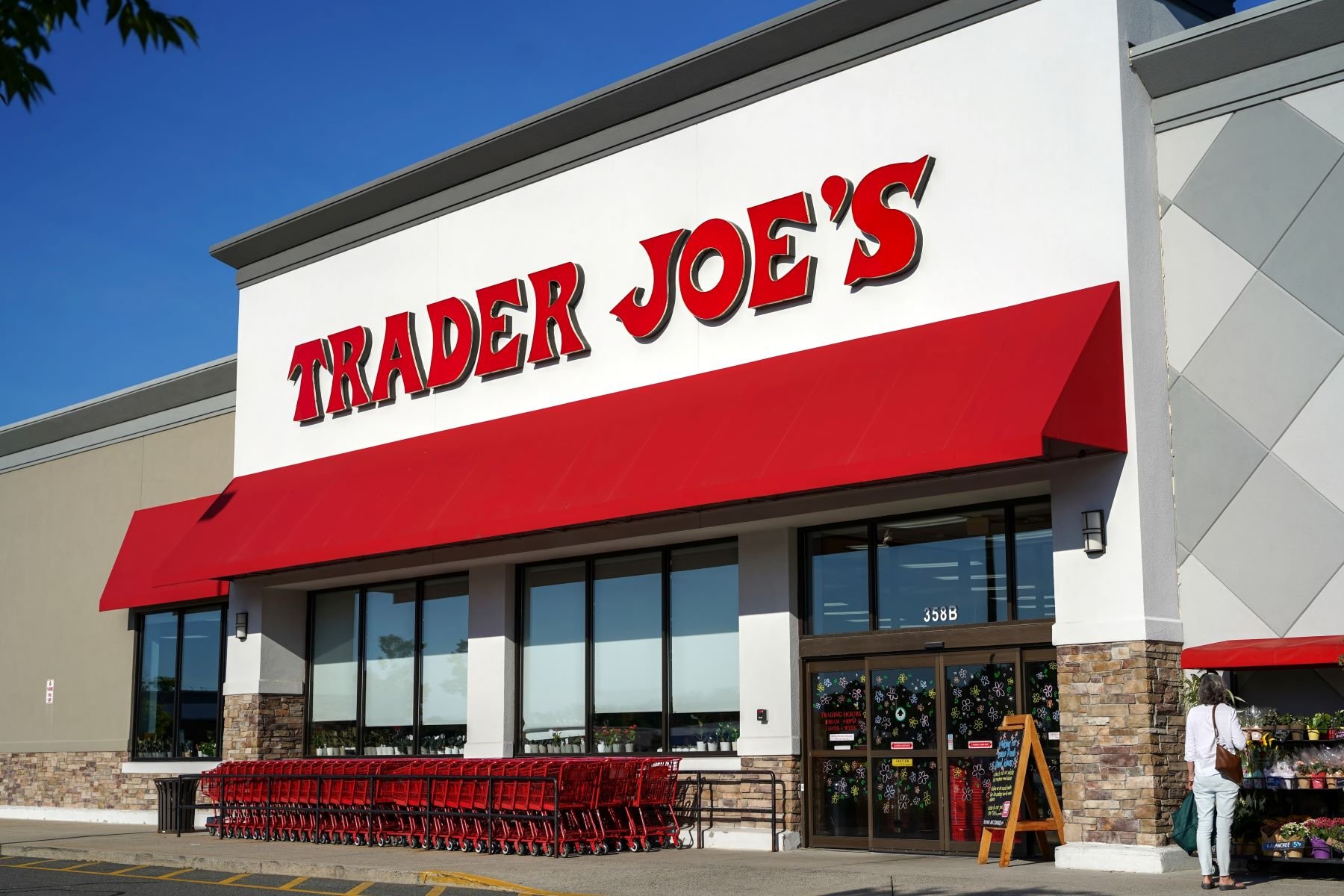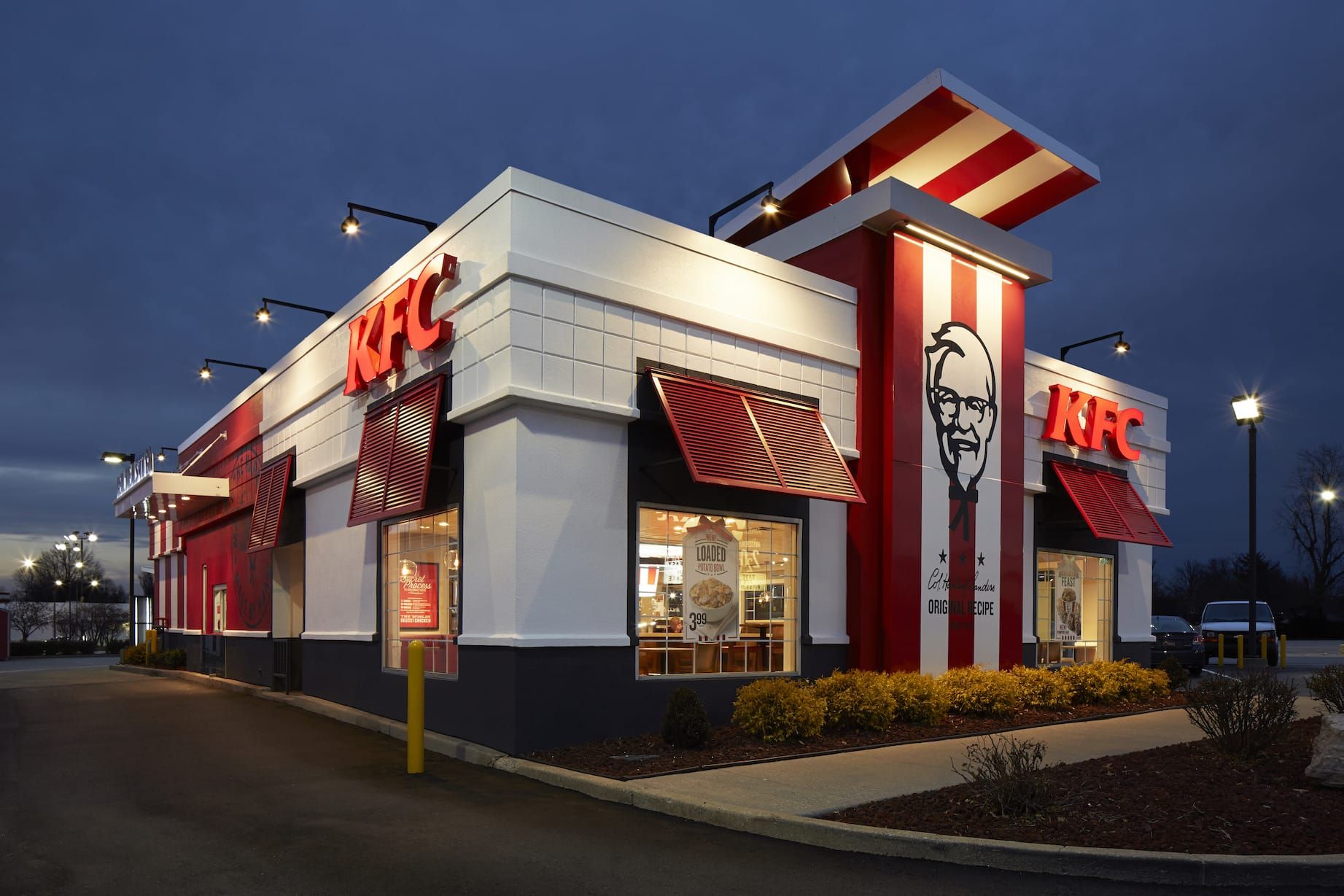
The American snack aisle, once a bastion of irresistible treats and impulsive indulgence, is undergoing a profound transformation. Major players in the snack food industry are openly reporting declining sales, a phenomenon driven by a powerful convergence of economic headwinds, a sweeping movement towards healthier eating, and even the unforeseen impact of modern pharmaceuticals. This isn’t just a fleeting market blip; experts are suggesting we are at “the precipice of some pretty significant change in the food system,” signaling a potentially permanent shift in consumer behavior.
From the makers of household names like Doritos to the companies behind beloved DingDongs, executives are grappling with a new reality where consumers are not only snacking less but are also becoming intensely selective. “Price fatigue is setting in after several years of sharp increases, and there’s growing uncertainty about future food costs,” observed David Ortega, a food economist and professor at Michigan State University. This economic strain, combined with a heightened desire for better nutrition and the rise of appetite-suppressing medications, means many traditional snack foods are finding themselves on the chopping block.
What’s particularly startling is the ripple effect extending even to foods historically marketed directly to children. While some market reports optimistically project growth in the overall kids’ food market, other insights reveal a contradictory trend: parents are increasingly opting for home-cooked meals due to concerns over cost and, critically, a pervasive “lack of consumer trust” in the health claims of food manufacturers. This dual narrative suggests that specific brands failing to address these anxieties are indeed “losing sales fast,” proving even the youngest consumers are part of this “Mindful Munch Revolution.”
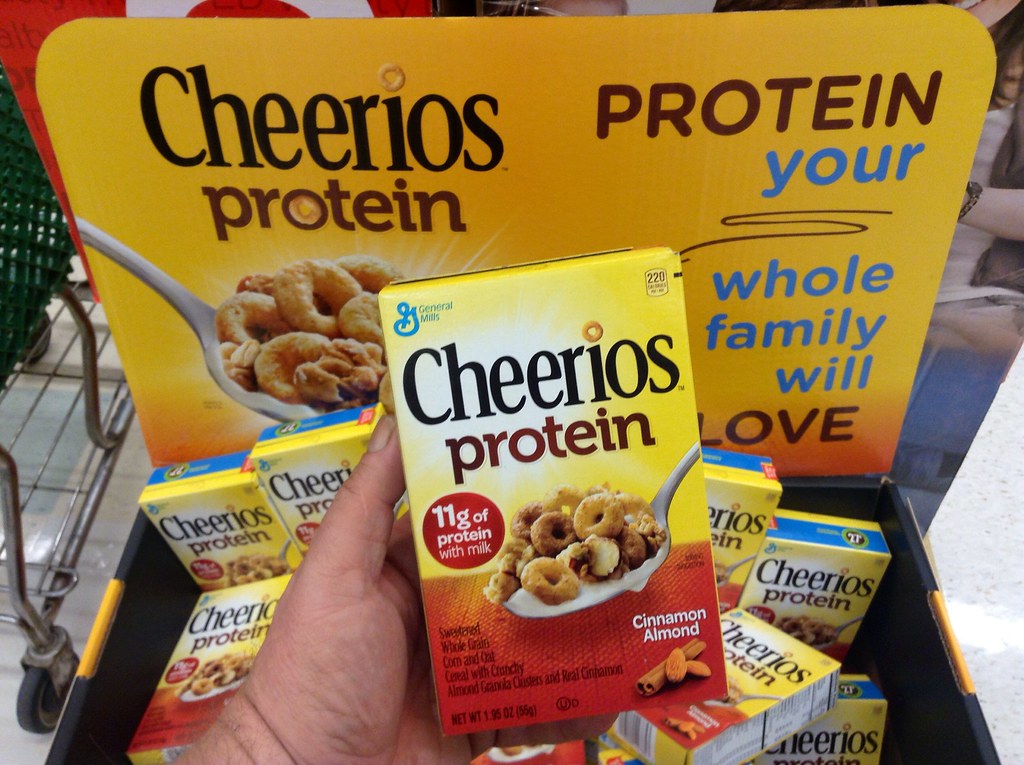
1. **General Mills: The Broad Impact on a CPG Giant**
General Mills, a titan in the consumer packaged goods industry, offers a stark illustration of the current snack food downturn. CEO Jeff Harmening stated in late March that sales were down across multiple snack categories, specifically citing “salty snacks, grain snacks and fruit snacks.” This broad decline within a single company highlights how pervasive the shift in consumer habits has become, affecting diverse segments of the snack market simultaneously.
Harmening attributed much of this struggle to a drop in “consumer confidence,” suggesting that widespread economic anxieties are compelling shoppers to tighten their belts across the board. The company’s third-quarter results further underscored this, with a reported 5% drop in net sales and a revised, lower outlook for the year. This performance “finished below our expectations, driven largely by greater-than-expected retailer inventory headwinds and a slowdown in snacking categories,” Harmening explained.
The situation at General Mills is particularly revealing because it points to a broader, value-driven consumer mindset. Harmening explicitly stated, “Our belief is that consumers have become much more value conscious.” This sentiment is not confined to human snacks; intriguingly, Harmening noted the same sales decline in the company’s dog food brand, quipping, “To my knowledge, there is not GLP-1s for dog treats,” humorously underscoring the economic rather than purely medical driver in some segments.
The company’s strategic response indicates an acknowledgment of the changing landscape. Harmening mentioned a focus on “improving our sales growth in fiscal 2026 by stepping up our investment in innovation, brand communication, and value for consumers.” This suggests even established giants recognize the urgency of adapting to new consumer priorities, moving towards products that offer both perceived value and align with evolving health trends within the “Mindful Munch Revolution.”

2. **J.M. Smucker and the Decline of Indulgent Sweet Snacks**
J.M. Smucker, a company with a significant footprint in the sweet baked goods sector through its ownership of Hostess Brands, is another major player feeling the crunch. Mark Smucker, the company’s CEO, president, and board chairman, reported in February that sales of Hostess snacks were down. This specific dip in a segment traditionally associated with indulgence provides clear evidence of consumers actively cutting back on non-essential treats.
The primary drivers cited for this decline echo the broader economic concerns plaguing the market. Smucker attributed the drop, in part, to “consumers continuing to be selective in their spending, largely driven by inflationary pressures and diminished discretionary income.” These comments align perfectly with the overall trend of “price fatigue” and the strategic shift consumers are making from optimizing their spending to actively sacrificing certain purchases.
The sweet baked snack category is particularly vulnerable when household budgets are strained. J.M. Smucker reported a significant 7% drop in sales for its sweet baked snacks in the third quarter. This figure underscores that when consumers are “watching their finances and stressed about their budgets,” as Chris Costagli of NielsenIQ noted, items like a Hostess DingDong become easier to remove from the shopping list than more essential groceries.
Therefore, the experience of J.M. Smucker serves as a microcosm of the wider “Mindful Munch Revolution,” where financial prudence and a growing consciousness about dietary choices are directly impacting sales of products that historically thrived on impulse and indulgence. Their struggles highlight the urgent need for brands in this category to either innovate on value or pivot towards healthier options that align with consumer desires for overall well-being.

3. **PepsiCo’s Frito-Lay/Doritos Division: Savory Snacking in Retreat**
Even the colossal snack empire of PepsiCo, with its dominant Frito-Lay and Doritos brands, is not immune to the seismic shifts occurring in consumer snacking. The company, in prepared remarks with its April 25 earnings report, stated that its “North America savory snack performance – primarily Frito-Lay – remained ‘subdued’.” This admission from such a market leader speaks volumes about the widespread nature of the “snackcession” affecting even the most entrenched categories.
PepsiCo explicitly linked the subdued performance to the persistent economic pressures impacting everyday shoppers. “Consumers have remained value-conscious across brands and channels as the cumulative impacts of inflationary pressures have strained budgets and altered food shopping patterns,” the company stated. This directly corroborates the expert analyses from David Ortega and Chris Costagli, who have highlighted price fatigue and budget stress as key drivers for consumers cutting back on non-essential items like chips.
The company’s fourth-quarter North American sales volumes for both Frito-Lay snacks and beverages fell by 3%, according to an Associated Press report. This decline in volume, despite potential price increases, indicates a genuine reduction in the quantity of snacks consumers are purchasing, rather than just a shift in spending patterns within the category. This suggests consumers are actively reducing overall consumption, not merely swapping brands.
Recognizing the evolving landscape, PepsiCo has expressed confidence that “lower prices and healthy options like Pepsi Zero Sugar and chips without artificial flavorings will position the business for growth.” This proactive stance reveals an understanding that the market is demanding both affordability and improved nutritional profiles. CEO Ramon Laguarta further confirmed in February that “Health and wellness is a growing concern for many,” reinforcing this strategic direction.
Product on Amazon: PepsiCo Foods Canada ULC (Frito Lay & Quaker Oats) Doritos Sweet Chili Heat Tortilla Chips, Snack Size, 70g/2.5 oz. Bag
Brand: PepsiCo Foods Canada ULC (Frito Lay & Quaker Oats)
Binding: Product Group: Grocery
Price: 13.99 USD
Flavor: [\\
Unit Count: 2.5 Ounce
Type: Tortilla Chip
Item Form: Chips
Features:
1. Experience a bold snacking experience with Doritos Sweet Chili Heat!
2. Savor the sweet bold crunch and wait for the heat of kick in. The sweet and savory spiciness of these tortilla chips will delight your taste buds.
3. Now available in a convenient 70g/2.5 oz. Snack Size Bag.
4. When it comes to bold flavoured tortilla chips and snacks, nothing comes close to the undeniably taste of Doritos. Not only are our tortilla chips packed with serious crunch and extreme flavours, the Doritos brand is all about intense experiences in snacking.
5. Try the sweet and savory spiciness of Doritos Sweet Chili Heat Chip. Gluten Free, 0 Trans Fat.
Shopping on Amazon >>

4. **Campbell’s Company: Cracker Sales Crushed by Shifting Tastes**
The Campbell’s Company, a long-standing fixture in American pantries and the maker of iconic Goldfish crackers, also finds itself caught in the snack food slump. The company lowered its full-year forecast specifically due to “weak demand for snacks.” This particular detail is significant as Goldfish crackers, while often seen as a family staple, fall squarely into a category experiencing widespread re-evaluation by consumers.
Crackers, often consumed as a standalone snack or with dips, represent a traditional savory snack segment that is now competing with a broader array of choices and consumer preferences. The “weak demand” cited by Campbell’s aligns with Rob Dongoski’s observation that consumers are “trending away from” the “ultra-processed category” of food. While Goldfish are often marketed as a fun, family-friendly snack, they are still a processed item, making them vulnerable to this broader shift.
Moreover, the financial strain on households means that even perceived essentials within the snack category are being scrutinized. As Chris Costagli noted, “snacks are the easiest to take off a shopping list” when budgets are tight. For families feeling the cumulative impact of inflation, a box of Goldfish crackers, while convenient, might be seen as a discretionary item that can be foregone in favor of more basic, nutrient-dense foods or home-prepared alternatives.
The challenge for Campbell’s is exacerbated by generational shifts. Younger generations, including Gen Zers and Millennials, “have a very different attitude about food than their older peers at the same age and are looking for healthier options.” This pushes traditional processed snacks like Goldfish to adapt to the “Mindful Munch Revolution,” prioritizing health, value, and a more deliberate approach to food choices.
5. **The Ultra-Processed Problem: Brands Falling Out of Favor**
A significant and overarching reason for declining snack sales across numerous companies is the widespread consumer trend away from “ultra-processed” foods. Rob Dongoski, global lead for food and agribusiness at Kearney, bluntly stated that many of the companies reporting sales declines are squarely in this category, and “that’s where consumers are trending away from.” This represents a fundamental re-evaluation of what constitutes an acceptable snack.
Consumers are increasingly scrutinizing ingredient lists and actively seeking out foods with simpler, more natural components. The “Mindful Munch Revolution” is characterized by “a broader shift toward healthier eating habits,” as David Ortega pointed out, with consumers “favoring snacks with stronger nutritional profiles.” Ultra-processed snacks, by their very nature, often struggle to meet these evolving expectations, frequently containing artificial ingredients, high levels of sugar, salt, and unhealthy fats.
This shift is not merely about avoiding “bad” ingredients; it’s about actively seeking “good” ones. The NIQ’s 2024 snacking study found that “The demand for healthy snacking options has skyrocketed in recent years, reflecting a broader shift toward wellness-oriented lifestyles.” This includes a drive for “snacks with wellness benefits, including plant-based items and snacks rich in protein, fiber and natural ingredients.” Brands heavily invested in traditional ultra-processed formulations are clearly lagging.
The context also highlights external pressures, such as “the Make American Healthy Again Commission… which is initiating efforts to phase out petroleum-based synthetic dyes from food.” This kind of regulatory focus amplifies consumer awareness and distrust, further pressuring brands whose products rely on these artificial components. The “ultra-processed problem” is a foundational challenge, pushing companies to reformulate or innovate to align with consumers’ discerning approach.

6. **Premium and Indulgent Snack Brands: The First to Be Cut**
When economic pressures mount and household budgets tighten, premium and indulgent snacks are frequently the first items to be sacrificed. Chris Costagli, vice president and food insights lead for NielsenIQ, revealed sobering statistics from his monthly study: “17% said they were buying fewer premium or indulgent snacks, such as a candy bar.” Crucially, these numbers “continue to increase each month,” indicating a growing and sustained trend.
This phenomenon is a direct consequence of “price fatigue” and consumers becoming “much more value conscious,” as articulated by David Ortega and General Mills CEO Jeff Harmening, respectively. When shoppers are “moving from optimizing to sacrificing” and adopting a “wait-and-see” stance about spending, as Katie Thomas of the Kearney Institute noted, discretionary luxury items are simply no longer priorities.
The context paints a clear picture: “While inflation and rising costs have made U.S. consumers more intentional with their food purchases, prioritizing essentials over discretionary items, preferences also seem to be shifting,” stated Robin Wenzel of the Wells Fargo Agri-Food Institute. Premium snacks, by definition, fall into the discretionary category, making them highly vulnerable during periods of economic uncertainty.
Furthermore, the rise of health consciousness complements this economic squeeze. Consumers are not just looking for cheaper alternatives; they are also seeking “nutrient-dense food options,” even for snacks. An indulgent, high-calorie, low-nutrition premium snack, while perhaps appealing for taste, offers little to a consumer focused on both financial prudence and health optimization. This dual pressure makes the market for such products particularly challenging for the “Mindful Munch Revolution.”
The initial forces of economic strain and a general move away from ultra-processed, indulgent options have significantly reshaped the snack landscape. Yet, the story doesn’t end there. Delving deeper reveals a complex tapestry of consumer motivations and external pressures that are further accelerating the decline of traditional snack sales. From a granular focus on nutrition and artificial additives to the unique challenges facing children’s food brands and the monumental impact of prescription medications, the “Mindful Munch Revolution” continues to unfold, forcing companies to confront a new reality where old strategies no longer guarantee success.
7. **Brands Failing on Nutrition: The Health Imperative**
The modern consumer is increasingly discerning, no longer satisfied with snacks that offer empty calories or minimal nutritional value. This isn’t just about avoiding the bad; it’s about actively seeking the good. As David Ortega, a food economist and professor at Michigan State University, pointed out, consumers are “becoming more selective, favoring snacks with stronger nutritional profiles.” This shift reflects a broader societal push towards wellness-oriented lifestyles, influencing every aisle of the grocery store.
The demand for healthier snacking options has truly skyrocketed in recent years. A 2024 snacking study by NIQ highlighted this, stating it reflects “a broader shift toward wellness-oriented lifestyles.” What consumers are looking for are “snacks with wellness benefits, including plant-based items and snacks rich in protein, fiber and natural ingredients.” Brands that have historically relied on less-than-stellar nutritional profiles are now finding themselves at a significant disadvantage, struggling to capture the attention of an increasingly health-conscious public.
This evolving consumer mindset demands more than just a token gesture towards health. Robin Wenzel of the Wells Fargo Agri-Food Institute notes that “U.S. consumers are rethinking eating habits and seeking out nutrient-dense food options, including snacks, causing this rebalance.” Companies like PepsiCo are acknowledging this, with CEO Ramon Laguarta confirming that “Health and wellness is a growing concern for many.” The success of future snack offerings will hinge on their ability to deliver genuine nutritional value, not just convenience or fleeting indulgence.
Forward-thinking companies are already taking action. PepsiCo, for instance, is positioning itself for growth with “healthy options like Pepsi Zero Sugar and chips without artificial flavorings.” General Mills, too, has indicated a focus on “improving our sales growth in fiscal 2026 by stepping up our investment in innovation, brand communication, and value for consumers,” which implicitly includes healthier product development. The message is clear: nutrition is no longer a niche concern but a mainstream expectation that brands must meet to survive.
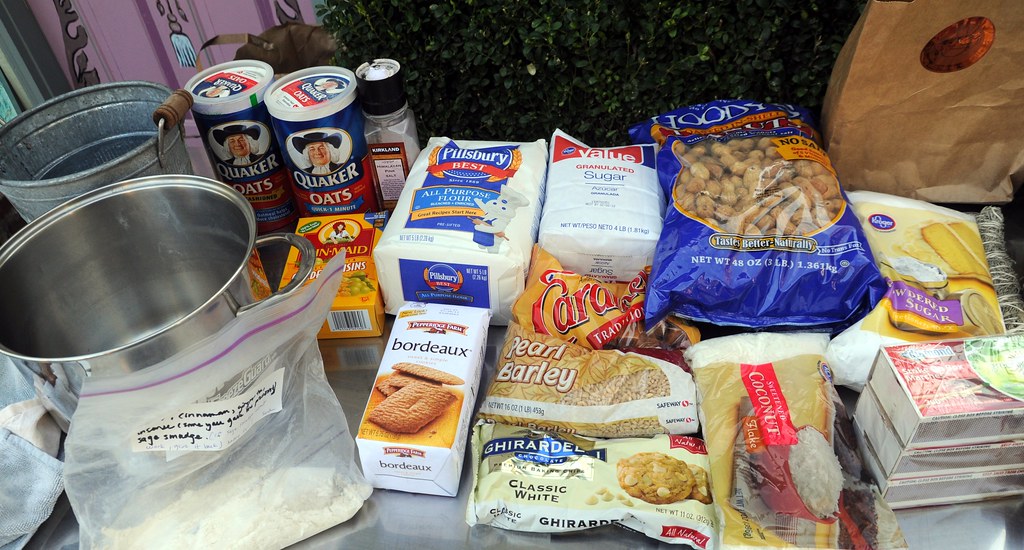
8. **The Artificial Dye Dilemma: Cleaning Up the Ingredient List**
Beyond just nutritional content, consumers are also becoming acutely aware of what goes *into* their food, particularly artificial additives like synthetic dyes. This growing scrutiny is another significant factor contributing to the decline in sales for brands that haven’t adapted. The desire to “reduce artificial dyes” is now a stated reason for Americans grabbing for snacks less, according to the overarching trends in the market.
This consumer concern is not merely anecdotal; it is gaining institutional traction. Rob Dongoski, global lead for food and agribusiness at Kearney, highlighted the “Make American Healthy Again Commission… which is initiating efforts to phase out petroleum-based synthetic dyes from food.” Such regulatory movements amplify public awareness and further erode consumer trust in products containing these ingredients. Brands that lag in reformulating their products face increasing pressure from both conscious shoppers and potential policy changes.
The momentum towards cleaner labels is undeniable. Robin Wenzel of the Wells Fargo Agri-Food Institute explicitly mentioned “recent action to remove certain additives and dyes from the food system” as another reason for consumers rethinking eating habits. This signals a fundamental shift in what constitutes an acceptable product in the eyes of many. For brands dependent on vibrant, artificially colored snacks, the imperative to innovate and switch to natural alternatives has become critical for maintaining market relevance and consumer appeal.
PepsiCo’s strategic response further underscores this trend. The company expresses confidence that “chips without artificial flavorings will position the business for growth.” This direct statement from a snack giant illustrates the tangible business impact of consumer preference for more natural ingredients. The move away from artificial dyes is not just a passing fad; it’s a deep-seated demand for transparency and purity that snack food companies must address head-on.
9. **The Complex World of Kids’ Food Brands: A Tale of Two Stories**
The children’s food market, often perceived as an evergreen segment, is navigating a particularly contradictory landscape. While some optimistic reports, like those from Verified Market Reports and Future Market Insights Inc., project significant revenue and exponential growth for kids’ food brands in the coming decade, other insights paint a more challenging picture. The reality on the ground shows that even this seemingly resilient category is not immune to the “Mindful Munch Revolution.”
Market insight firm Mintel reports that “meals cooked from scratch and those made from prepared and unprepared ingredients are most popular among parents and their children,” directly challenging the growth projections for pre-packaged kids’ foods. This divergence stems from two primary concerns for parents: cost and a profound lack of trust in the food industry. Inflation and rising prices, particularly for processed foods which are often more expensive than homemade alternatives, compel families to seek more economical solutions.
The issue of trust is equally, if not more, impactful. A report by the EIT Food Consumer Observatory found that a mere 46% of consumers trust food manufacturers, with 27% actively distrusting them. This skepticism extends to health claims, with only 44% believing the foods they consume are healthy. This widespread distrust bleeds directly into the realm of children’s food, making parents wary of health and nutritional claims on packaging designed for their little ones.
Food manufacturers like Ella’s Kitchen’s Tim Collins counter this by emphasizing that “Kids food is highly regulated to ensure its safety and quality,” and that they set “strict nutritional guidelines that go beyond industry requirements.” Brands worry that if parents avoid the kids’ aisle, children may end up with snacks “not-age appropriate, not as strictly regulated, and contain far more fat, salt, and sugar.” Nestlé also points to the importance of “age-appropriate textures” for children’s oral and motor skills development, highlighting the specialized nature of these products.
To regain parental confidence, the industry must focus on “developing tasty products, which provide value for money and deliver good health outcomes,” as Collins suggests. Despite these efforts and the optimistic global market forecasts, Mintel still predicts a rise in at-home meal occasions driven by the cost-of-living crisis. However, the overall global population growth might be absorbing some of the sales impact, meaning that while consumer preferences are changing, the sheer volume of new consumers could keep the overall market for formulated kids’ foods high, albeit with shifting internal dynamics.
10. **Companies Lacking Value: The Budget-Conscious Consumer**
In an era of persistent inflation and economic uncertainty, the concept of ‘value’ has been entirely redefined for the average shopper. Companies that fail to deliver perceived value are struggling to maintain their footing in the snack market. General Mills CEO Jeff Harmening encapsulated this perfectly, stating that “consumers have become much more value conscious.” This isn’t just about cheap products; it’s about getting the most out of every dollar spent, a sentiment echoed across the industry.
PepsiCo also acknowledged this critical shift, noting that “Consumers have remained value-conscious across brands and channels as the cumulative impacts of inflationary pressures have strained budgets and altered food shopping patterns.” This leads directly to behaviors like cutting back, trading down to lower-cost products, or aggressively seeking out deals, as observed by food economist David Ortega. Snack foods, often seen as discretionary, are particularly vulnerable when shoppers are making these tough choices.
The data supports this trend unequivocally. Chris Costagli of NielsenIQ found that in April, “43% of those surveyed… said they were cutting back on buying snack foods and 38% were looking for deals more often.” This highlights a consumer base actively scrutinizing prices and prioritizing essentials. Harmening further clarified that consumers are “buying staples more than discretionary items and looking for value,” indicating that snacks without a strong value proposition are easily left off shopping lists.
In response, companies are adapting their strategies. General Mills is explicitly focusing on “value for consumers” in their future investment plans. Similarly, the broader CPG industry is tackling changes by “focusing on affordability, value packs, flavor, and healthy options.” For brands to thrive in this environment, a clear and compelling value proposition—whether through lower prices, larger packs, or superior quality that justifies its cost—is no longer optional, but essential.

11. **Impulse-Purchase Dependent Brands: The Decline of Spontaneous Indulgence**
The once-thriving world of impulse buys and spontaneous treats is facing a significant downturn, directly impacting brands that have historically relied on such purchasing behaviors. The American snack aisle, once “a bastion of irresistible treats and impulsive indulgence,” is undergoing a “profound transformation” where unplanned purchases are increasingly rare. This represents a fundamental shift in how consumers engage with snack products.
A key indicator of this change comes from Chris Costagli’s NielsenIQ study, which revealed that “37% of people… said their impulse purchases at the grocery store were down.” This figure, along with the increasing number of consumers cutting back on premium or indulgent snacks, paints a clear picture: when budgets are tight and health consciousness is high, the spontaneous grab of a candy bar or a bag of chips becomes a conscious decision to forego.
This decline in impulse buying is deeply intertwined with the economic pressures and the “Mindful Munch Revolution.” As consumers are “moving from optimizing to sacrificing” and taking a “wait-and-see” stance on spending, as Katie Thomas of the Kearney Institute noted, discretionary items simply don’t make the cut. Brands traditionally designed for the ‘treat yourself’ moment are now grappling with a consumer who is prioritizing essentials and making more deliberate choices.
The shift means that snacking is becoming “less impulsive and more intentional,” according to the detailed analysis of the core trend. Consumers are no longer just reaching for the nearest colorful package; they are actively evaluating if a snack aligns with their financial prudence and health goals. For brands built on immediate gratification, this necessitates a re-evaluation of product positioning, focusing on qualities like genuine nutritional value or long-term satisfaction rather than fleeting, unplanned desire.
12. **GLP-1 Medications: A Game-Changer for the Snack Industry**
Perhaps the most disruptive and rapidly evolving factor contributing to the snack sales slump is the increasing adoption of GLP-1 diabetes and weight-loss medications, such as Ozempic and Wegovy. These drugs, by design, suppress appetite, leading to a direct and measurable reduction in food consumption, particularly for highly processed and unhealthy snacks. Their “unforeseen impact” is truly reshaping consumer behavior at a physiological level.
David Ortega underscored this profound effect, noting that “The adoption of GLP-1 medications… is accelerating these changes, with appetite suppression leading to lower overall grocery spending and a sharper decline in purchases of highly processed and unhealthy snacks.” While General Mills CEO Jeff Harmening humorously dismissed GLP-1s for dog treats, his underlying message acknowledged their impact on human snack consumption, separate from purely economic drivers.
The numbers are stark. An EY report suggests that GLP-1 adoption is growing faster than anticipated and “could impact $12 billion in snack food sales over the next decade.” Their survey found that GLP-1 users significantly reduced snack food consumption by “between 40% and 60%,” while increasing their intake of health and specialty foods by 50%. A Cornell and Numerator study further corroborated this, revealing that households with a GLP-1 user reduced grocery spending by 5.5%, with an “11% decrease in savory snacks.”
This sub-trend, termed the “GLP-1 Impact on Snacking,” signifies a direct causal link between medication use and reduced snack consumption. While Deloitte offered a cautious counter-point, suggesting that dropout rates from GLP-1s might diminish their long-term impact on CPG sales, the immediate and projected influence is undeniable. Snack companies are being urged to “Understand the Evolving Consumer” and “Explore Partnerships with Healthcare and Wellness Providers” to adapt to this new reality, potentially offering products that align with the dietary recommendations for individuals managing appetite through these medications.
The American snack aisle is undeniably in the throes of a “Mindful Munch Revolution.” This isn’t just about fleeting trends or minor market adjustments; it’s a fundamental re-evaluation of what, why, and how consumers snack. From economic pressures forcing a focus on value to a heightened awareness of nutrition and artificial ingredients, and the profound, appetite-altering effects of GLP-1 medications, every facet of the industry is being challenged. Brands that embrace innovation, prioritize health and value, and truly understand the evolving motivations of their customers will not only survive but thrive in this dynamic new era of conscious consumption, redefining the very essence of snacking for generations to come.


